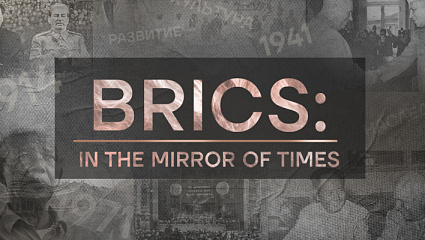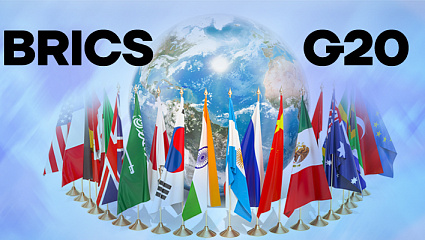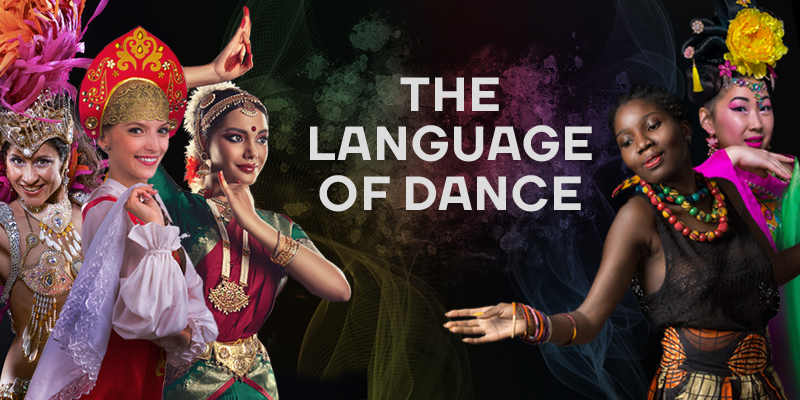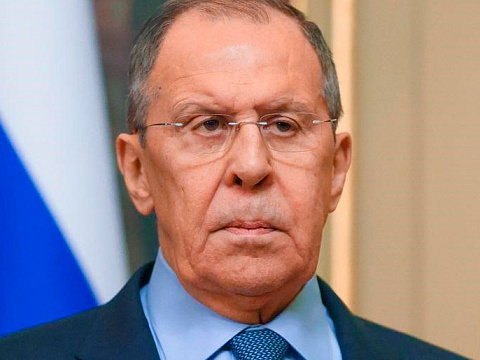Kirill Razlogov: "The center of the film industry exists not only in Hollywood, but in India and China"
Film and culture expert. An ex-program director of the Moscow International Film Festival. Headed the Russian Institute for Cultural Research. Has been teaching History of the World Cinema at the high courses of screenwriters and directors for more than 50 years. Has an academic degree of the Doctor of Art Studies.
The TV BRICS correspondent Olga Bubnova talked to Kirill Razlogov.
You will represent Russia in the jury of the 4th BRICS Film Festival starting in Brazil. During the last Festival, the Russian media reported that the main goal of the festival is to popularize movies, quote: "created outside the USA and Europe". Is it really the main objective of the festival, or only one of many?
The matter is that it was the idea of the Prime Minister of India, and with our help, with my participation, the project was a little bit different. The task was to show that the center of the film industry exists not only in Hollywood, but in India and China. And that is certainly so.
The majority of movies existing in the world are made in Southeast Asia, both directors and viewers are more numerous in this territory. And the movies from Hollywood and western countries are just an option.
Even the technologies are different, in India, for example, an average duration of a movie is more than three hours. The movie is shown with a break. People come to the cinema almost for the whole day.
It used to be the same in Hollywood, when there were two-movie programs, but it was in the '50s. After all, today an average film lasts approximately for two hours, and their festivals are generally guided by this type of movies.
Our Indian colleagues wanted to show that movies are made not only there, but generally in their country, and in Russia, too. These movies are made differently because of the different cultures, different traditions, these movies have their audience, often bigger than that of the Hollywood pictures. It is necessary to show this cinematography.
Brazil is a strongly "film making" country, and China is also a strongly "film making" country. China and India, in general, are making more than a half of the world movies. And Russia is not the last country in this respect, though it is connected also with Europe. And, except for Africa, in which the motion picture art only begins to develop, all other countries are the big "film making" countries. Therefore, the festival should show and tries to show that there are other models of cinema, not less, but even more interesting than the model to which we have got used.
You got ahead of my question, I wanted to ask about the modern film industry of South Africa. You just have told that it is only beginning to develop, what is happening now in the SAR’s cinema?
South Africa produces about ten movies a year, full-length feature films. They are generally devoted to the fight against apartheid, the recent African history.
There is an obvious interest to the question of women's rights. South African documentary films are perhaps more interesting than feature ones. But the feature cinema has success in South Africa and in the neighboring African countries. So, it is not one of those countries where there is no cinema at all. But it is one of those countries where the cinema needs to be developed.
The program of the festival is very varied. Tell a little about the main positions.
That part which interests me first is movies. There is an official movie competition with very tough regulations – just two movies from each country.
Russia presents two pictures: the movie "Tsar Bird" which won the first prize of the Moscow Film Festival last year, and the movie "Tutor" – a work of a very young director.
In addition, there are special programs. One of them is the program of recently restored old movies. Russia presents two films: Fragment of an Empire (1926) by Fridrikh Ermler. This is super classic, and the State Film Fund team has not only restored it, they added frames that were cut out in different copies. It was made of several copies. The second picture is the movie by Marlen Khutsiev "It was the month of May". It is a TV movie, restored and shaped up.
There will be a program of short student's films. I take part in it, as I teach at VGIK, we selected these pictures, selected student's works. Again, we offered these works to organizers. They selected several works from VGIK, several works by other film schools, both in Moscow and in St. Petersburg.
There will be a program of full-length animation pictures. Animation is very demanded, very popular today. They will show one cartoon from the Three Warriors series, made by the film studio "Melnitsa".
The archival program seemed very interesting to me, if I get it right, it is the first time they show a movie of the twentieth century at the festival, isn’t it?
Yes, it is. It is the first time this program became common for all participating countries, with an emphasis on film restoration, on the reconstruction of how these pictures looked when they were released. This is a very fashionable trend.
Jane Fonda said in one of her speeches at a conference devoted to the restoration of cinema heritage, that it would be good to spend on restoration of classics, film classics, as much money as it is spent on production of new movies. Of course, no one listened to her, but it is proved by how people treat classics. She, Martin Scorsese, people working in the State Film Fund, in other archives of the world. So, this program reflects great interest to the cinema heritage.
China presents the movie "Goddess" in the archival program, it is 1934, a very hard time for China in politics, but very much, one may say, beneficial in terms of cinema. The 1930s are called the "Golden Age" of Chinese cinema. How did the cinema develop in Celestial Empire in that period?
The cinema has always been popular in China. This was the period of social difficulties, and in the period of social difficulties, creativity blossoms as a rule. It was especially important for China, because it was a practically uncensored period.
Still, the cinema was not perceived as something having important political value, therefore, very different movies were made. But in movies in China, as well as in other countries of the world, personal feelings, personal experiences were more important than some social cataclysms.
Though military movies, the military movies about the liberation movement, were also a success. But they gained an impetus in post-war China, when the military topic became the key one, and not long ago, I prepared a festival of military patriotic movies in Volokolamsk. And Chinese military pictures have always been demanded. But these are pictures, which were kind of officially supported in China, and they will surely be nominated at the BRICS festival. Besides, China has a mighty film industry covering both its own audience, and a considerable part of the world audience, because the Chinese work for the Chinese living all around the world.
You just have told that there was no censorship in China. And when, or approximately in what decade, it appeared in the Chinese cinema?
I guess, it appeared right in the '30s, but most of all – during the war, in the '40s and during the post-war period, during the civil war, it demands an extra rigid censorship.
And then, as in all countries of the socialist system, the socialist orientation, censorship became one of the main mechanisms, due to which film process was built.
First of all, they looked what kind of film it was, what it was about, and whether it contained any dangerous ideas. After that, the films containing no dangerous, but only official ideas got the green light.
There was also a period in the history of China, the period of cultural revolution, when they made one or two movies in a year, or in five years. Those were revolutionary operas, and everyone watched them, because no one made other movies in China.
And then, when the tough regime was cancelled, in the '70s, the Chinese cinematography suddenly emerged, very lively. And they began to make 150 pictures in China per year. Chinese cinematography regained the status of the world’s largest cinematography. Today, they make even more movies. A little less than in India, but nevertheless, a lot of them.
The Indian cinema of the 20th century developed just as promptly, and the Festival will show the movies of the 1970s: "The Village of Brahmins" and "The Circus". In the Soviet Union, many works of Indian directors were watched with pleasure and loved. Does our cinema audience know these pictures, or will they be a new experience?
They would be new for our audience if we showed them. We had our idols, Raj Kapoor was the major one, especially the post-war movie "The Tramp", it was popular among all Soviet people. The movie "Mr. 420". Those were generally melodramas with a kind of detective plot. Indian movies were the most popular in Russia, they were not as hostile as American or French ones. Therefore, it was easier for them to pass the censorship.
It had passion, strong feelings, and melodrama. The movie "Disco Dancer" became a sensation. One girl wrote to the "Soviet Screen" magazine that she watched this film more than forty times: voluntarily, without any violence from outside. There's that… And then, my colleagues critics began to accuse her of bad taste.
As for me, I had another question – what vitamins for soul should a film contain to make a person watch it forty times, again, without any violence, and for their own money?
After the fall of the Soviet Union, it was, I guess, only the Cinema of India channel that retained interest in once popular Indian movies. And one of the goals of the BRICS Festival is to return this cinema the right of a full-fledged cultural product.
Next year, the BRICS Festival will take place in Russia, and I think, it will be the year of return of the mass Indian cinema and the mass Chinese cinema to our viewer.
In the 20th century, the Indian cinema consisted generally of melodramas, as you have already told. And the today’s Indian cinema, does it have various genres?
India makes about seven hundred movies a year. In each state of India, some of which have their own language, they make 220-230 movies – more than in Russia! Therefore, naturally, the Indian cinema is very diverse.
In some states, only men sit in cinema halls, they do not allow women. In the State of Kerala, people have such names as Stalin, Lenin, and Marxist influence is extremely strong, and the social cinema for a poor population group is the main one.
Mumbai, where the so-called Bollywood is situated, makes big entertaining production. There are studios in the South of India where all things are combined.
There is a State of Bengal where the intellectual, philosophical cinema blossoms, it has huge success at the international film festivals. The Indian cinema is very diverse.
And the host of the Festival, Brazil, will show "The Cruel Gang" by Umberto Maura in the archival program, it is classic, this director is called ‘the father of national cinema’ in Brazil. What is so interesting about "The Cruel Gang", well, of course, except the fact that it is the semi-sound film?
This is the transition period from silent cinema to talking pictures. It is an adventure movie, the Latin American cinema, adventurous in many respects. But for us, for historians, the most interesting period of Brazilian cinema is the so-called Cinema Nova. A new Brazilian wave is the '60s, but they fairly preferred the older classical movie, just to remind that Brazilian cinema existed even when nobody, except Brazilians, knew about it.
What is more, Brazil supplied practically all Latin America with movies. Therefore, it is no wonder that Brazil became the participant and the host of the BRICS Film Festival.
The special feature of this Festival is that it is based on the university situated in the big university city. Therefore, unlike BRICS festivals in other countries, a part of program is educational – student's movies, work with youth takes a more important place than at traditional festivals.
I know that a big part of the festival is devoted to courses, you can register and take a course either in English, or in Portuguese. What are all these courses about?
These are professional courses for cinematographers. The courses on the history of cinema, various cinema professions. This is a part of the training program characteristic of this festival.
The goal of the festival is to unite BRICS cinematographers in order to discuss our common problems, and mainly to discuss partnership development in the nearest future. And what are the plans? Perhaps, some joint pictures or joint projects in BRICS?
The plans are numerous, but these plans are implemented with great difficulty. After all, we have different languages, different traditions, different customs. It is necessary to find some general subject. Or, on the contrary, to make it a purely economic cooperation.
Not long ago, a Russian-Chinese picture was screened China, they expected a huge commercial success, which did not take place. It was the Chinese variant of Gogol’s "Viy", but the Chinese viewer has other preferences.
The favourite movie in China is the Russian movie "The Dawns Here Are Quiet". Because in the Chinese Civil War, there also participated young women, they were involved in war and died there, too.
Finding such subjects, looking at how they work – this task is very difficult. Every year, I visit meetings where they discuss issues. Yes, coproduction is necessary, yes, we need to show movies to each other, but still, we observe no big changes in this direction. Let's hope that the Festival in Brazil will open some gate in this respect. I set special hopes on the festival that we will organize next year.







 DIGITAL WORLD
DIGITAL WORLD



































